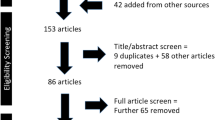Summary
Since 1991, the Medical Toxicology Unit (MTU) at Guys’ Hospital, London, has been assessing the toxicological problems associated with the use of traditional and herbal remedies and dietary supplements. This assessment was carried out by evaluating reports to the National Poisons Information Service (London) [NPIS(L)] which provides emergency information to medical professionals. Relevant telephone enquiries to NPIS(L) were identified. Further case details were obtained by follow-up questionnaire, clinical consultation, toxicological analysis of samples from patients and/or products and botanical identification of plant material.
Of 1297 symptomatic enquiries evaluated there was a possible/confirmed association in 785 cases. Case series have been identified which substantiate previous reports, including liver problems following the use of Chinese herbal medicine for skin disorders, allergic reactions to royal jelly and propolis and heavy metal poisoning caused by remedies from the Indian subcontinent. Although the overall risk to public health appears to be low, certain groups of traditional remedies have been associated with a number of potentially serious adverse effects.
Considering the extent of use of herbal remedies and food supplements a comprehensive surveillance system for monitoring the adverse health effects of these products is essential. Surveillance of a large population is needed for the complex task of identifying the uncommon and unpredictable adverse effects which are potentially serious. In the UK, the Medicines Control Agency responded to the MTU report by recognising the need for vigilance and by incorporating adverse reactions reporting on unlicensed herbal remedies into their drug reaction monitoring function. As a further step to safeguard the patients/consumers an effective single regulatory system is required which would ensure the safety and quality of all herbal remedies and food supplements available in the UK.
Similar content being viewed by others
References
Consumers Association. Healthy Choice. Which? Magazine. 1995 Nov: 8–13
MacLennan AH, Wilson DH, Taylor AW. Prevalence and cost of alternative medicine in Australia. Lancet 1996; 347: 569–73
Eisenberg DM, Kessler RC, Foster C, et al. Unconventional medicine in the United States. N Engl J Med 1993; 328(4): 246–52
Ministry of Agriculture Fisheries and Food. Dietary supplements and health foods. Report of the working group. London: MAFF, 1991
Perharic L, Shaw D, Colbridge M, et al. Toxicological problems resulting from exposure to traditional remedies and food supplements. Drug Saf 1994; 11(4): 284–94
Jones KJ. Determining causation from case reports. In: Strom BL, editor. Pharmacoepidemiology. New York: Churchill Livingstone 1989: 275–88
Edwards IR, Biriell C. Harmonisation in pharmacovigilance. Drug Saf 1994; 10(2): 93–102
Martindale. The Extra Pharmacopoeia. 28th ed. London: The Pharmaceutical Press London, 1989: 1635–68
ODonohue JW, Reid MA, Varghese A, et al. Micronodular cirrhosis and acute liver failure due to chronic copper self-intoxication. Eur J Gastroenterol Hepatol 1993; 5: 561–2
Forsyth PD, Davies JM. Pure white cell aplasia and health food products. Postgrad Med J 1995; 71: 557–8
Perharic L, Shaw D. An appeal to pharmacists to report adverse effects of herbal and vitamin products. Pharmaceutical J 1994; 252: 479
Kalix P. Khat: scientific knowledge and policy issues. Br J Addict 1987; 82: 47–53
Newall CA, Anderson LA, Phillipson JD. Herbal medicines a guide for health care professionals. London: The Pharmaceutical Press, 1996
Kolev ST, Leman P, Kite GC, et al. Toxicity following accidental ingestion of Aconitum containing Chinese remedy. Hum Exp Toxicoll 1996; 15: 839–42
Perharic L, Shaw D, Leon C, et al. Possible association of liver damage with the use of Chinese herbal medicine for skin disease. Vet Hum Toxicol 1995; 37(6): 562–6
Vautier G, Spiller R. Safety of complementary medicines should be monitored. BMJ 1995; 311: 633
Bjellerup M, Bruze M, Hansson A, et al. Liver injury following administration of 8-methoxypsoralen during PUVA therapy. Acta Derm Venereol 1979; 59(4): 371–2
Bensoussan A, Myers SP. Towards a safer choice. Report on the practice of traditional Chinese herbal medicine in Australia. Sydney: University of Western Sydney, Macarthur, 1996
Laporte JR, Ibanez L, Vendrell L, et al. Bronchospasm induced by royal jelly. Allergy 1996; 51: 440–5
Leung R, Thien FCK, Baldo B, et al. Royal jelly induced asthma and anaphylaxis: clinical characteristics and immunologic correlations. J Allergy Clin Immunol 1995; 96: 1004–7
Leung R, Ho J, Chan D, et al. Royal jelly consumption and hypersensitivity in the community. Clin Exp Allergy 1997; 27: 333–6
Larrey D, Vial T, Pauwels A, et al. Hepatitis after germander (Teucrium chamaedrys) administration: another instance of herbal medicine toxicity. Ann Intern Med 1992; 117: 129–32
Gordon DW, Rosenthal G, Hart J. Chapparral ingestion —the broadening spectrum of liver injury caused by herbal medicines. JAMA 1995; 273(6): 489–90
Loeper J, Descatoire V, Letteron P, et al. Hepatotoxicity of germander in mice. Gastroenterology 1994; 106: 464–72
Lekehal M, Pessayre D, Lereau JM, et al. Hepatotoxicity of the herbal medicine germander; metabolic activation of its furano diterpenoids by cytochrome P450 3A depletes cytoskelton-associated protein thiols and forms plasma membrane blebs in rat hepatocytes. Hepatology 1996; 24(1): 212–8
MacGregor FGB, Abernethy VE, Dahara S, et al. Hepatotoxicity of herbal remedies. BMJ 1989; 299: 1156–7
Yu H, Zhong S, Chan K, et al. Pharmacognostical investigations on traditional Chinese medicinal herbs. J Pharmacy Pharmacol 1995; 47: 1129
But PHH. Attitudes and approaches of traditional Chinese medicine to herbal toxicity. J Natural Toxins 1995; 4(2): 207–15
Chan TY, Tomlinson B, Critchley JA. Aconitine poisoning following the ingestion of Chinese herbal medicines: a report of eight cases. Aust N Z J Med 1993; 23(3): 268–71
Chan TYK, Lee KC, Chan AYW, et al. Poisoning due to Chinese proprietary medicines. Hum Exp Toxicol 1995; 14: 434–6
Bayly GG, Braithwaite R, Sheehan, et al. Lead poisoning from Asian traditional remedies in the West Midlands —a report of a series of five cases. Hum Exp Toxicol 1995; 14: 24–8
Author information
Authors and Affiliations
Corresponding author
Rights and permissions
About this article
Cite this article
Shaw, D., Leon, C., Kolev, S. et al. Traditional Remedies and Food Supplements. Drug-Safety 17, 342–356 (1997). https://doi.org/10.2165/00002018-199717050-00006
Published:
Issue Date:
DOI: https://doi.org/10.2165/00002018-199717050-00006




